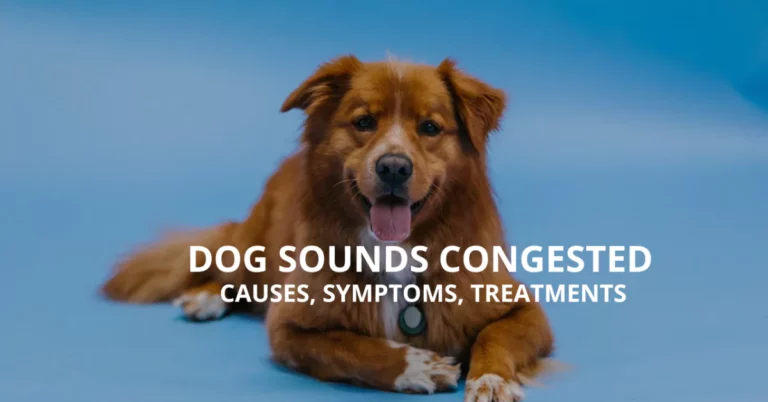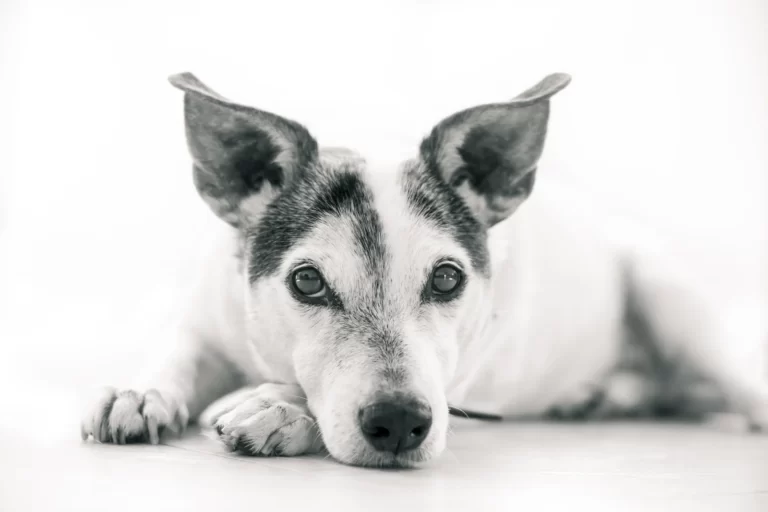Dogs Ears Are Cold: Causes, Symptoms, and Solutions
If you have ever cuddled with your dog and felt their ears, you may have noticed that sometimes they are warm and sometimes cold. What does this mean? If dogs ears are cold then how to get treated with it?
Also Read: Kennel Nose in Dogs: What Is It and How to Treat It?
Normal Dog Ear Flap Anatomy and Function
Dogs have two types of ears: inner ears and outer ears. The first one is responsible for hearing and balance, while the outer ear is composed of the ear canal and the ear flap (also called the pinna). The ear flap is the part of the ear you can see and touch.
The ear flap has several functions:
- It helps to collect and amplify sound waves that enter the ear canal.
- It helps regulate the ear canal’s temperature by constricting or dilating blood vessels in response to environmental changes.
- It protects the ear canal from dirt, debris, insects, and water.
The ear flap is made of cartilage covered by skin and fur. It has a rich blood supply that gives it its color and warmth. The blood vessels in the ear flap can change their diameter depending on the environment’s temperature.
When cold outside, the blood vessels constrict to reduce heat loss and keep the core body temperature stable. When warm outside, the blood vessels dilate to increase heat dissipation and prevent overheating.
Your dog’s ear flap temperature can vary depending on the weather and activity level. It is usual for your dog’s ears to feel slightly more relaxed than their body temperature, especially if they have been outside in cold weather.
Also Read: Dog Sneezing and Coughing: Causes, Symptoms, and Treatment
Reasons Your Dogs Ears Feel Cold

There are several possible reasons why your dog’s ears are cold to the touch. Some are harmless and temporary, while others are serious and require immediate veterinary care.
Here are some of the most common causes of cold ears in dogs:
Frostbite
Frostbite occurs when the tissue freezes due to prolonged exposure to cold temperatures. It can affect any body part, but it is more likely to occur in areas with less blood flow and insulation, such as the ears, paws, tail, and nose.
Frostbite can cause damage to the skin, blood vessels, nerves, and muscles. The severity of frostbite depends on how long and cold the exposure was. Mild frostbite may cause redness, swelling, pain, and numbness in the affected area. Severe frostbite may cause blisters, ulcers, necrosis (tissue death), and gangrene (infection).
Frostbite can be prevented by limiting your dog’s exposure to freezing weather, providing adequate shelter, and regularly checking their ears, paws, tail, and nose for signs of frostbite.
Hypothermia
When the body temperature falls below average due to exposure to cold air or water, hypothermia is a condition that results. Hypothermia can affect any animal or human, but it is more common in dogs with short fur or thin coats. It can cause shivering, lethargy, weakness, and confusion.
Hypothermia can be prevented by keeping your dog warm and dry and avoiding prolonged exposure to cold weather or water. If you suspect your dog has hypothermia, contact your vet immediately.
Age, Breed, and Size
Some dogs are more prone to getting cold ears than others, depending on their age, breed, and size. Puppies and senior dogs cannot regulate their body temperature and are more sensitive to cold weather.
Small dogs have a larger surface area to volume ratio and lose heat faster than large dogs. Dogs with short fur or thin coats have less insulation and protection from the cold than dogs with long fur or thick coats.
If your dog belongs to one of these categories, you should take extra care to keep them warm and comfortable, especially in the winter.
Hypovolemic Shock
Hypovolemic shock occurs when the blood volume drops significantly due to severe blood loss or dehydration. It can be caused by trauma, surgery, and internal bleeding. Hypovolemic shock can cause pale gums, cold ears, and shock.
Shock is life-threatening when the organs do not receive enough oxygen and nutrients due to low blood flow. It can cause organ damage, coma, and death.
Hypovolemic shock can be prevented by ensuring that your dog can always access fresh water.
Parvo
Parvo is a highly contagious and often fatal viral infection that affects dogs, especially puppies. Parvo can cause severe vomiting, diarrhea, dehydration, loss of appetite, lethargy, fever, and blood in the stool. Parvo can also affect the heart and cause cardiac arrest.
Parvo can be prevented by vaccinating your dog against the virus and avoiding contact with infected dogs.
Also Read: Yeast Infection Ear Mites in Dogs? Causes | Symptoms | Treatment
Diagnosing Causes of Cold Ears in Dogs
Suppose your dog’s ears are cold and you are unsure why; you should consult your vet for a diagnosis. Your vet will physically examine your dog and check their vital signs, such as temperature, pulse, respiration, and blood pressure.
Your vet may also perform some tests, such as blood tests, urine tests, x-rays, or ultrasounds.
Depending on the diagnosis, your vet will prescribe the appropriate treatment for your dog. It may include medication, fluid therapy, surgery, or supportive care.
Taking Your Pup’s Body Temperature
One way to check if your dog’s ears are cold because of a low body temperature is to take their temperature with a digital thermometer.
You can do this at home by following these steps:
- Turn on the thermometer and make sure it is set to Fahrenheit.
- Lubricate the tip of the thermometer with petroleum jelly or water-based lubricant.
- Gently lift your dog’s tail and insert the thermometer about one inch into its rectum.
- Hold the thermometer in place until it beeps or flashes.
- Remove the thermometer and read the temperature on the display.
The average body temperature of a dog is between 101.5°F and 102.5°F. If your dog’s temperature is below 99°F or above 103°F, you should contact your vet.
Signs Your Dog is Cold
Besides cold ears, there are other signs that your dog may be cold and need extra warmth. These include:
- Shivering or trembling
- Curling up or tucking their tail
- Seeking shelter or hiding
- Whining or barking
- Slowing down or refusing to move
- Limping or stiffness
- Pale or blue gums
Treating Your Pup’s Cold Ears
If your dog’s ears are cold because of the weather, you can treat them by warming them up gently.
You can do this by:
- Rubbing your hands together and then cupping them over your dog’s ears
- Wrapping a warm towel or scarf around your dog’s head and ears
- Using a hair dryer on a low setting and blowing warm air on your dog’s ears
- Applying a warm compress or heating pad to your dog’s ears
Avoid using anything too hot, such as hot water bottles, that could burn your dog’s ears. You should also monitor your dog’s ears for any signs of frostbite, such as swelling, blisters, or blackened skin.
Tips for Safe Play in the Wintertime
Playing in the snow can be fun for you and your dog, but it can also pose risks to your dog’s health and safety.
Here are some tips to keep in mind when playing with your dog in the wintertime:
- Limit the time outside. Don’t let your dog stay outside for too long in cold weather, as they can get hypothermia or frostbite. Bring them inside every 15 to 30 minutes and check their ears.
- Provide adequate clothing. If your dog has short fur or thin coats, they may need a coat or sweater to keep them warm in the winter. Ensure the clothing fits well and does not restrict their movement or breathing.
- Keep them hydrated and fed. Playing in the snow can dehydrate and exhaust your dog, so ensure they can access fresh water and food before and after playing.
- Avoid ice and frozen water. Ice can be slippery and dangerous for your dog, as they can fall and injure themselves or breakthrough and drown. Keep your dog away from ice and frozen water sources like ponds, lakes, rivers, or pools.
- Clean them up. After playing in the snow, you should wipe down your dog with a towel to remove any snow, ice, salt, or chemicals that may have stuck to their fur or paws.
Also Read: How to Keep Your Dog Mouth Clean? A Comprehensive Guide
Frequently Asked Questions (FAQs)
Should my dog have warm or cold ears?
Your dog’s ears should be slightly more relaxed than their body temperature but not too cold or icy. If your dog’s ears are very cold, it could indicate a problem with their circulation, body temperature, or health.
Is it bad if my pup’s ears are cold?
It depends on the cause of the cold. If your pup’s ears are cold because of the weather, it is not necessarily bad as long as you warm them up gently and prevent frostbite. However, it could be harmful if your pup’s ears are cold because of an illness or injury.
How can I tell if my dog is cold?
Some signs that your dog may be cold include shivering, curling up, seeking shelter, whining, slowing down, limping, and pale or blue gums. You can also check your dog’s body temperature with a digital thermometer to see if it is below average.
What does it mean if my pup’s ears are cold?
It means your pup’s ears are not receiving enough blood flow or heat from their body. It could be due to the weather, their age, breed, or size, or an underlying condition or problem that affects their circulation or body temperature.
Is it normal for dogs’ ears to feel cold?
It is usual for dogs’ ears to feel slightly more relaxed than their body temperature, especially if they have been outside in cold weather or have short fur or thin coats. However, if your dog’s ears feel very cold or icy or show other signs of discomfort or illness, it could indicate a problem that needs attention.
Conclusion
Dogs’ ears are cold for various reasons, some harmless and temporary, while others are serious and require immediate veterinary care. Knowing the normal anatomy and function of dog ears and some tips for safe play in the wintertime is essential.
Following these guidelines, you can keep your dog’s ears warm and healthy and prevent complications or problems.






